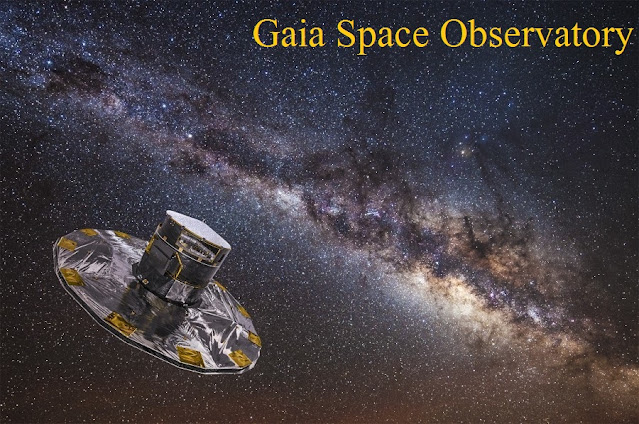Among the hundreds of thousands of stars shining in the night sky, there are some stars whose identity has existed among the common people for ages. One such star is the North Pole Star.

Looking
at the northern sky, one can identify a star whose position is the same
throughout the year. This star is called Pole Star. Since we live in the
Northern Hemisphere of the Earth, we identify this star as the North Pole Star.
Another name for the North Pole star is Alpha Ursa Minoris (α Ursa Minoris or αUMI)
or Polaris. This star is the brightest star in the Ursa Minor Constellation.
We
say for our convenience that Polaris is in space along the Earth's North Pole.
But in reality it is not. If it were possible to draw a straight line from both
poles of the earth, it would reach an imaginary point in infinite space. We
identify this imaginary point as the Celestial Pole. The pole of our earth
actually revolves around that imaginary Celestial Pole. Polaris is very close
to that Celestial Pole. That's why Polaris is always fixed at the North Pole.
There is never any rising or setting of this star. If we observe Polaris and
its surroundings with a simple telescope, we will see that all the stars in
that region seem to be rotating continuously around the Polaris. Out of these stars,
there are 10 very bright stars and innumerable small obscure stars. Scientists
call this cosmic state the ‘Engagement Ring’. This position of the Polaris helps it in Astrometry. (Astrometry:
The branch of Astrophysics that measures the position, speed, and brightness
of a star.) This is why the star has been given the title of Pole Star.

In
fact, what we call Polaris is actually a combination of three stars. These are
called Polaris Aa, Polaris Ab and Polaris B. Two more stars were later
identified as Polaris C and Polaris D, but after detailed research, their
identities were ruled out for various reasons.
Polaris
Aa is the largest of these star triads in size and volume. It is an F7IB class
star. Its mass is 5.4 times the mass of the Sun and its diameter is 37.5 times
the mass of the Sun. Its brightness is also high enough for its size. Its
luminosity is 1,260 times that of the Sun. But due to the huge distance of
Polaris from the Earth, where the Sun's magnitude of brightness is -26.7, Polaris
Aa's magnitude of brightness is -3.6. Here it is important to mention that, the
smaller numerical value of the brightness of all the cosmic objects visible in
the sky, the clearer the object will be visible to our eyes. The surface
temperature of this star is 6015 Kelvin or 5,741.85 degree Celsius and the
speed of rotation is 14 km per second or 50,400 km per hour.
Polaris
Aa's closest companion star is Polaris Ab. It is an F6V class star. These two
stars are orbiting the centre of mass of both. Polaris Ab is the smallest of
these three stars. The mass of this star is 1.26 times larger than the mass of
the Sun and 1.04 times larger in diameter than the Sun, meaning that this star
is almost equal in size to the Sun but 3 times brighter than the Sun. The
magnitude brightness of Polaris Ab is +3.6. The distance from Polaris Aa to
Polaris Ab is 18.8 AU (Astronomical Unit or AU: The average
distance from the Sun to Earth is 1 AU).
This
time we will learn something about Polaris B, the last star of this star trio.
It is an F3V class star. These stars are orbiting Polaris Aa and Polaris Ab.
This star is also bigger than the sun in every sense. This star is 1.39 times
larger than the Sun in terms of mass and 1.38 times larger in terms of
diameter, which means that this star is about one and an half times larger than
the Sun. Due to its large size, it is 3.9 times brighter than the Sun and has a
magnitude of brightness, is +3.1. The most surprising fact is that the surface
temperature of this star is much higher than that of Polaris Aa. Its current
value is 6,900 Kelvin or 6,626.85 degree Celsius. The rotational speed of
Polaris B is much higher than that of Polaris Aa. At present its speed is 110 km
per second or 3,96,000 km per hour. The distance of Polaris B from the centre
of mass of Polaris Aa and Polaris Ab is 2,400 AU. The star is easily seen by
ordinary telescopes and was discovered by William Herschel in 1779 (or in
1780).

Polaris
is a star with variable light intensity. This type of celestial object is
called Cepheids. Since the discovery of Polaris, its light intensity has
changed. Detailed research on this strange character of the star began in 1852,
and in 1911, the Danish scientist Ejnar Hertzsprung confirmed this fact more
strongly through observations and mathematical processes. However, it is
practically impossible to detect the difference in the intensity of light of
Polaris with the naked eye without any aid. From 1963 to 1966, only three years
of observations showed that the brightness of the Polaris had greatly
decreased. But now scientists say that the brightness of this star has begun to
increase little by little again. Now the brightness value of the combination of
these three stars is between +1.86 and +2.13. Since the time Ptolemy observed
this star (136 AD), its luminosity has increased by 2.5 times. Polaris is
currently the 48th brightest of all the stars visible from Earth's sky.


After
so long observations, research has not yet been able to fully determine the
exact distance of the Earth from the Polaris. All the research papers that have
been published on this subject show that this star is located between 323 light
years to 433 light years or 99 to 133 parsec from the earth. (Light Year:
The distance light travels in a year. Parsec: This is
currently the largest unit for measuring distances in space. 3.26 light years
equals 1 parsec. Parsec is an acronym for Parallax Second) The European
Space Agency launched the Hipparcos satellite on 8th August 1989, and operated
until August 15, 1993. Afterwards that, the same space research institute
launched the Gaia Space Observatory for the same purpose on 19th December 2013,
and it is still operational today. Yet even today the ambiguity about the exact
location of Polaris has not gone away.


Polaris
is currently the Pole Star at the North Pole of the Earth, following the cosmic
rules. But in the distant past this star did not exist and will not exist in
the future in that position. In other words, if we look at the past, we can
understand that from the past to the present, more than once, the title of the
pole star have been received by different stars at different times. According
to the Earth's time, the position of pole star changes every 25,752 years on
average. The study found that Polaris is the second closest star to the Earth's
northern pole so far. In the future, the angular value of Polaris from the
North Pole will decrease by less than 0.5 degree. The star that came closest to
the North Pole is called Thuban. In the past, the angular value was only 0.2
degree.
As
mentioned earlier, Polaris did not have a pole star at the North Pole. Just
before Polaris, the title was won by Kochab or Beta Ursa Minoris (β Ursae
Minoris or β UMi). This star is the second brightest star in the constellation
Ursa Minor. Again this star has taken its title from its predecessor Thuban.


24th
March 2100 is a date when Polaris will be closest to the North Pole. On that
day, the angular value of Polaris from the Earth's North Pole will be 89 degree
32 minute 51 second, which means that the star will be only 27 minute and 9
second away from the position just above the head. Since then, the distance
from Polaris to the Earth's North Pole will continue to increase. It is clear
that, the position of our Pole Star will continue to change after the
twenty-first century. In the 41st century, the star of our North Pole may move
toward the star Gamma Cephei (γ Cephei). In the next 91st century, the title
will begin to move little by little and will probably move towards the Deneb
star. The brightest star in the northern sky is Vega with a magnitude of
brightness +0.026. At present the angular value of the Earth's pole with this
star is 5 degree. However, in the next 13,000 years, this star will probably be
the Pole Star of the Earth. Polaris will again be the North Pole star of the
Earth after a certain time. However, it may not be as close to the North Pole
as it is now.



The
full name of Polaris is Stella Polaris which is a Latin name and meaning is Pole
Star. It was named in 1547 by the Dutch scientist Gemma Frisius. At that time
the angle of the star with the North Pole was 3.7 degree. The name Polaris was
later recognized internationally by the Working Group of Star Names or WGSN of
International Astronomical Union (IAU) on June 30, 2016.

The
name of this star is mentioned in different languages and cultures of
different countries. In English literature, this star has been given various
names such as 'The Ship Star', 'The Star of The Sea' or 'The Guiding Star'. The
name 'Cyansura' is also mentioned. In our India, this star is known as 'Dhruba'
which means stationary. Apart from this, Polaris has been identified by many
names in various countries in Africa, in different parts of the Arabian
Peninsula, in many medieval Islamic documents, in Alaska, Russia and European
populations, especially in various countries of Scandinavia of North Europe.
It
is clear to us that the importance of Polaris is immense everywhere, from
scientific research to literature or from local culture to historical
documents. After a while Polaris will move away from its place, replaced by
another star. This is the law of time. If human civilization can survive on
earth, avoiding self-harm, then everything including scientific research, local
cultures, historical documents etc will continue to revolve around that star in
a new way.

DECLARATION: All The Images Have Been Sourced From Google.
